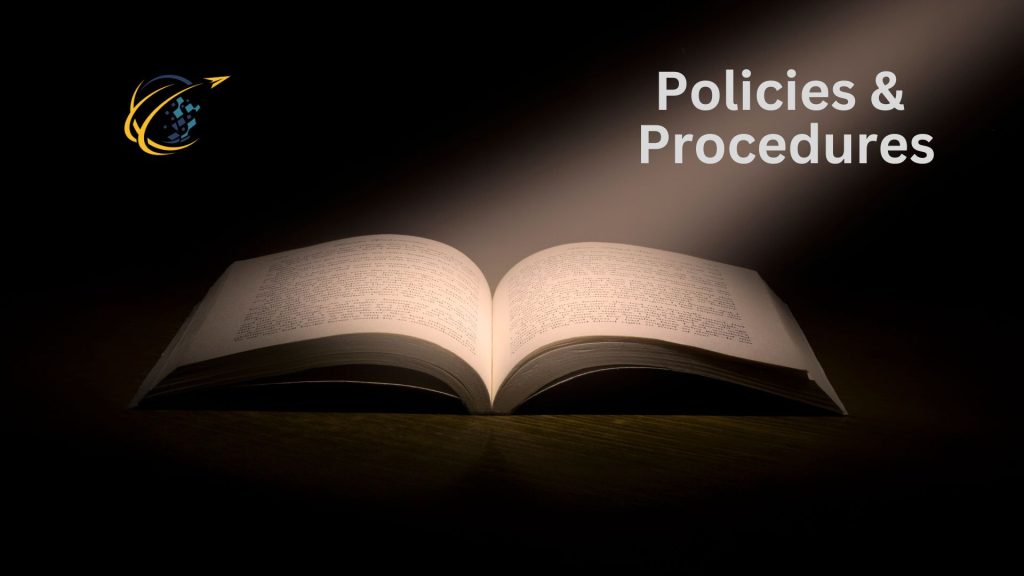
Developing a policy and procedure manual is a vital task for any business, regardless of its size or industry. This document serves as a roadmap for employees, outlining the standards, rules, and practices that guide daily operations. By creating a comprehensive manual, companies ensure consistency, maintain compliance, and enhance overall efficiency. Whether you’re a small startup or a large corporation, having a well-crafted policy and procedure manual is crucial for establishing clear expectations and fostering a productive work environment.
The process of developing a policy and procedure manual involves more than just writing down company rules. It requires a strategic approach to ensure that the document aligns with the company’s goals, industry regulations, and culture. This manual should reflect the company’s mission and values while providing detailed instructions for handling various situations. From HR policies to operational procedures, a thorough manual creates a unified system that supports decision-making and employee accountability.
Why a Policy and Procedure Manual is Essential
A policy and procedure manual serves as the foundation of an organization’s internal framework. It helps employees understand the company’s expectations, reducing confusion and misunderstandings. This clarity is essential in ensuring that all employees, from entry-level staff to executives, follow the same guidelines. In turn, this fosters consistency across the organization and promotes a positive workplace culture.
Moreover, developing a policy and procedure manual is critical for compliance. Many industries are subject to strict regulations that companies must adhere to. A well-documented manual ensures that employees are aware of these regulations and follow the necessary protocols. Additionally, the manual can protect the company from legal liabilities by clearly outlining the rules regarding workplace behavior, safety, and other critical matters.
A manual also aids in onboarding new employees. With a comprehensive guide in hand, new hires can quickly learn about the company’s procedures, values, and expectations. This accelerates the onboarding process and ensures that new employees integrate smoothly into the organization. In today’s competitive business environment, having a structured onboarding process is key to retaining top talent and promoting long-term growth.
Key Components of a Policy and Procedure Manual
When developing a policy and procedure manual, it’s important to include several key components that address different aspects of the business. First, the manual should start with an introduction to the company’s mission, vision, and values. This section sets the tone for the rest of the document, helping employees understand the purpose of the policies and procedures.
Next, the manual should include detailed descriptions of the company’s policies. These can range from human resources policies, such as attendance, leave, and employee conduct, to operational policies, such as procurement, finance, and IT protocols. Each policy should be clearly defined, providing employees with the necessary information to follow them accurately.
In addition to policies, developing a policy and procedure manual involves outlining step-by-step procedures for completing tasks. Procedures are essential for ensuring that employees understand how to perform their duties efficiently and effectively. For example, a procedure might detail how to process an invoice, handle a customer complaint, or report a workplace incident. By documenting these procedures, companies can streamline operations and minimize errors.
Another important aspect of the manual is the inclusion of legal and compliance information. This section should cover any laws, regulations, or industry standards that the company must comply with. This ensures that employees are aware of the legal framework governing their work and helps the company avoid potential legal issues.
Benefits of Developing a Policy and Procedure Manual
The benefits of developing a policy and procedure manual are numerous. One of the main advantages is the promotion of organizational consistency. When all employees follow the same policies and procedures, the company can maintain a standard level of quality and efficiency. This consistency is particularly important for customer-facing roles, where deviations from standard procedures could negatively impact the customer experience.
Another benefit is improved employee performance. With clear guidelines in place, employees are more likely to understand their roles and responsibilities, leading to higher productivity. A policy and procedure manual can also serve as a reference tool for employees, helping them resolve issues independently without needing constant supervision. This empowerment can boost morale and increase job satisfaction.
Additionally, a well-documented manual reduces the risk of miscommunication and conflict within the organization. By providing employees with a clear set of rules, the manual helps prevent misunderstandings and disputes. In situations where conflicts do arise, the manual serves as an objective reference point for resolving issues.
Developing a policy and procedure manual also supports business continuity. In the event of leadership changes, employee turnover, or unexpected disruptions, the manual ensures that critical processes continue to run smoothly. Having a documented set of procedures enables the company to maintain operations, even in times of uncertainty.
How to Keep the Manual Relevant
As businesses evolve, so do their policies and procedures. Therefore, developing a policy and procedure manual is not a one-time task. Companies must regularly review and update the manual to ensure it remains relevant and reflects current practices. This might involve revising policies in response to new regulations, incorporating feedback from employees, or adapting procedures to new technologies.
To keep the manual up to date, businesses should establish a review schedule. This could be done annually or semi-annually, depending on the company’s size and industry. During these reviews, it’s essential to involve key stakeholders from various departments to ensure that all aspects of the business are considered.
Additionally, companies should provide employees with ongoing training on the policies and procedures outlined in the manual. This ensures that employees stay informed about any updates or changes and continue to follow the correct procedures.
Developing a policy and procedure manual is a critical step for any organization aiming to maintain consistency, compliance, and efficiency. This comprehensive document not only helps employees understand their roles and responsibilities but also supports the company’s long-term growth. By outlining clear policies and procedures, businesses can foster a positive workplace culture, reduce legal risks, and enhance operational performance. In a dynamic business environment, a well-crafted manual is an invaluable tool for achieving organizational success.

